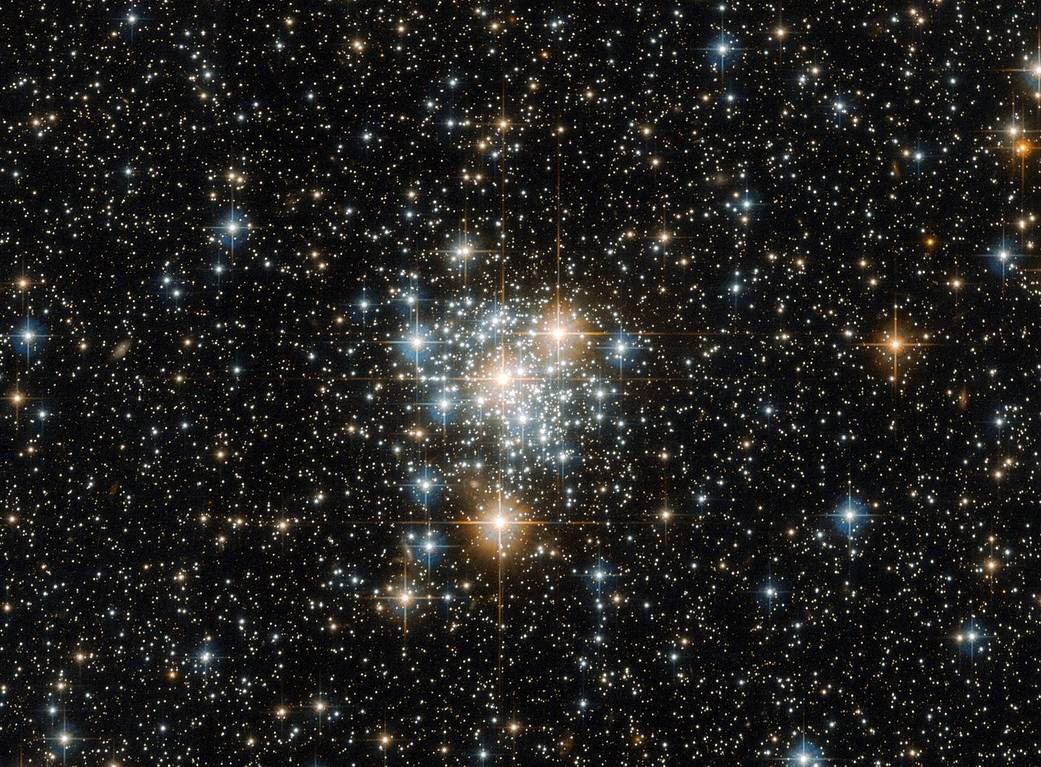In 1977, Kip Thorne and Anna Zytkow proposed a model for a red giant containing a neutron star (Image 1) at it’s core. Such stars were given the name “Thorne-Zytkow objects.” This idea had mostly just been speculated on up until this point due to the recent discovery of neutron stars (Eller, 2014). In their in depth elaboration on these objects, the two determined these stars would be red giants on the edge of the Hayashi track, meaning they’d be brighter and more red than normal red giants. They also determined that more light comes from the release of gravitational energy than the nuclear burning in said objects, which is not typical of normal red giants.
The model they created was split into outer, middle, and inner sections. The inner layer has the atmosphere that encases the star in gasses, the photosphere that illuminates the star, and the static envelope. The middle has the section of the envelope with inflowing matter, the halo of the neutron star, and the carbon burning shell of the neutron star at the core. The inner section is the rest of the neutron star in the core.
There are two possibilities of how these stars form. One theory states that the normal star can collide with a neutron star leading to the stars combining to form a Thorne-Zytkow object. The second states that a nearby normal star can engulf a neutron star while evolving (Cannon et al., 1992). The larger Thorne-Zytkow objects have the potential explode after collapsing when the elements fueling the nuclear reactions run out (Moriya, T. and Blinnikov, S., 2021).
In 2014, a team of researchers led by Emily Levesque identified HV 2112 (Image 3) as a possible Thorne-Zytkow object. The star was first discovered in 1908 by Henrietta Leavitt in the Small Magellanic Cloud (Image 2). While examining the spectrometry of various stars to determine their chemical properties, they discovered HV 2112 had a chemical profile with ratios predicted for theoretical Thorne-Zytkow objects. There were also some inconsistencies between the models and HV 2112, however Phillip Massey, a member of the research team, expressed hope inconsistencies are a result of theory being outdated and in need of more work.
So what chemical signatures are astronomers looking for when searching for Thorne-Zytkow objects? Well, high levels of lithium are an important indicator. Heavy elements like rubidium and molybdenum in larger concentrations than normal are also expected of these stars. This is because the nuclear reactions (Image 4) that occur in the neutron star core are different from those that would occur in a typical star.
The temperature of these objects would still be within the typical range of a normal red giant (Image 5), so that isn’t an indicator of a star with a possible neutron star core either. The difference in light output isn’t noticeable enough to be a sure sign when looking for Thorne-Zytkow objects either. In an article by Cynthia Eller (2014) containing an interview with Kip Thorne shortly after HV 2112 was dubbed a possible Thorne-Zytkow object he said “…I think the only way to identify them is through these element abundances.”
Soon after HV 2112 was identified as a possible Thorne-Zytkow object, it was deemed more likely candidate to be an asymptotic giant branch star. However, in the same article addressing this, a new candidate, HV 11417, was identified (Beasor, 2018) in the Tucana constellation (Featured Image). So far, it has not be conclusively proven or disproven to be one of these objects but many looking for proof of Thorne-Zytkow objects hold it in high hopes.

Bibliography
Astronomers discover first Thorne-żytkow object, a bizarre type of hybrid star. (Jun 2014). Retrieved December 23, 2021 from CU Boulder Today
Beasor, E. et al. (Jul 2018). A Critical Re-evaluation of the Thorne-Zytkow Object Candidate HV 2112. Monthly Notices of the Royal Astronomical Society, 479(3), 3101–3105. https://doi.org/10.1093/mnras/sty1744
Cannon, R.C. et al. (Feb 1992). The Structure and Evolution of Thorne-Zytkow Objects. The Astrophysical Journal, 386(1), 206-214. https://doi.org/10.1086/171006
Eller, C. (Jun 2014). Kip Thorne Discusses First Discovery of Thorne-Żytkow Object. Retrieved Dec 23, 2021 from Caltech
Levesque, E. et al. (May 2014). Discovery of a Thorne-Zytkow Object Candidate in the Small Magellanic Cloud. Monthly Notices of the Royal Astronomical Society Letters, 443(1), L94-L98. https://doi.org/10.1093/mnrasl/slu080
Moriya, T. and Blinnikov, S. (Sep 2021). Properties of Thorne-Zytkow Object Explosions. Monthly Notices of the Royal Astronomical Society, 508(1), 74-78. https://doi.org/10.1093/mnras/stab2584
Thorne, K. and Zytkow, A. (Mar 1977). Stars With Degenerate Neutron Cores. I. Structure Of Equilibrium Models. The Astrophysical Journal, 212(1), 832-858. http://doi.org/10.1086/155109
Tout, C. et al. (Sep 2014). HV2112, A Thorne–Żytkow Object or A Super Asymptotic Giant Branch Star. Monthly Notices of the Royal Astronomical Society Letters, 445(1), L36-40. https://doi.org/10.1093/mnrasl/slu131





